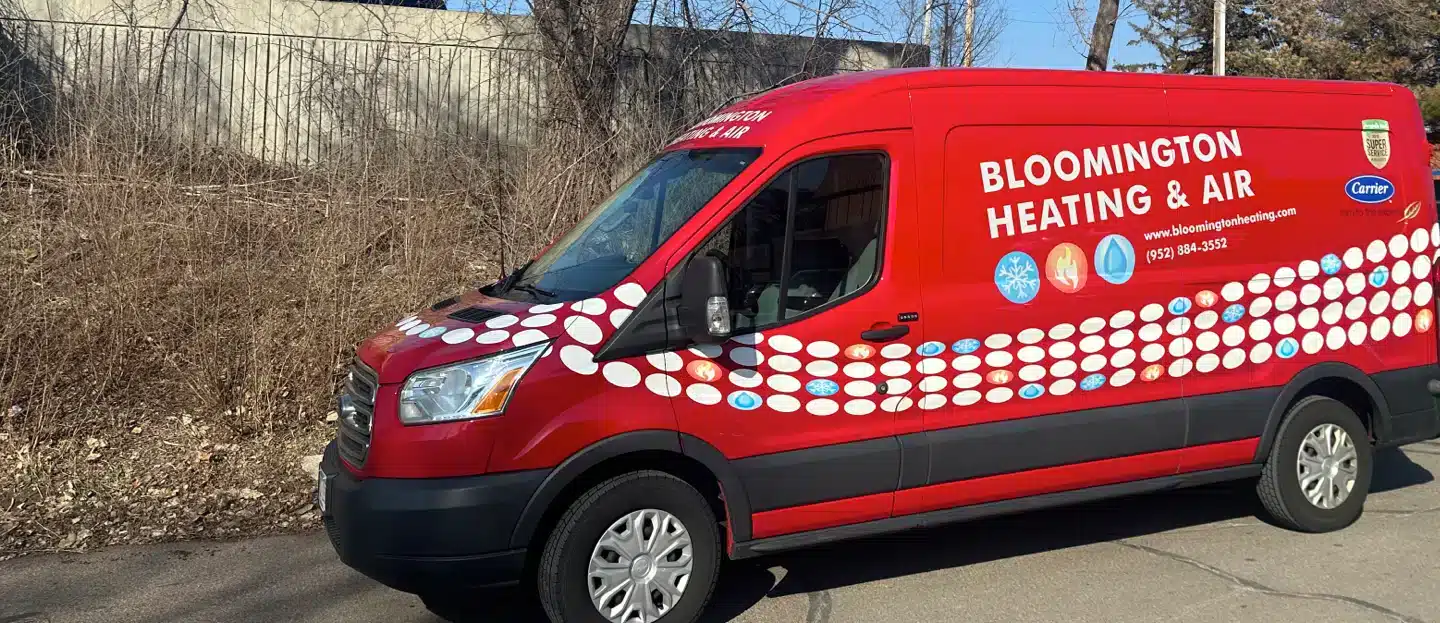How Your Home’s Humidity Affects Your Comfort Level
Trustworthy Team, Locally Owned

24/7 Emergency Phone Line
Family Owned & Operated
Licensed, Bonded & Insured
When the level of humidity in a home is either too high or too low, achieving indoor comfort can be easier said than done. While humidity levels that are too low can cause issues from sinuses irritation and joint stiffness to itchy skin and dry eyes, high humidity levels can likewise result in discomfort and negative health effects due to reduced indoor air quality (IAQ).
Throughout the summer months, Bloomington residents can expect an average humidity level of approximately 70 percent. Bloomington Heating & Air offers encompassing residential HVAC products and services to help homeowners maintain an inviting residential environment all year-round. Effectively regulate the level of humidity within your home’s indoor air with the help of our HVAC company in Bloomington, MN. Contact us to schedule HVAC services today!

What Is Relative Humidity?
Humidity can be measured in several methods, but relative humidity (RH) is the most common — it’s expressed as a percentage compared with the amount of moisture the air can hold when completely saturated. The amount of moisture the air can hold depends on the current temperature (the warmer the air, the more moisture it can hold). When the air is at 100 percent saturation, the air reaches its dew point and outdoor moisture begins to condense on the exteriors of residential properties, such as windows, as well as interior home surfaces.
High Indoor Moisture Causes Low Levels Of Comfort
High levels of humidity and moisture in the home produce muggy conditions that result in a reduction to indoor comfort, such as the disruption to normal sleeping patterns and the aggravation of asthma, allergies, and other respiratory issues. High humidity can be especially dangerous when coupled with high heat, as this pair disrupts the body’s ability to cool itself, which may lead to heat stroke. What’s more, high indoor moisture levels produce the perfect environment for mold, mildew, and dust mites to grow and spread throughout the home.
High humidity can likewise affect the proper function of your residential HVAC system. Air conditioners cool the interior of your home by removing heat and moisture from the air. When humidity levels are excessive, your home’s air conditioner humidity setting works overtime. If the equipment doesn’t have sufficient cooling capacity, it may be unable to cope with extreme humidity, and a result, the home may never feel truly comfortable. This added stress can also lead to a system breakdown and the need for regular ac repair as well as higher utility bills.
Common Signs Of High Indoor Humidity
When the humidity is too high, your home will feel warmer than it actually is. The following comprises common signs associated with high levels of indoor humidity.
- Moist, clammy indoor air
- Foggy windows and mirrors
- Musty, foul odors
- Chronic discomfort
- Inability to sleep
- Wet insulation
- Mold growth
- Rotting wood
- Dust mites
- Blistering paint
- Peeling wallpaper
What Is The Ideal Range Of Indoor Humidity?
According to the HVAC experts, the recommended range of relative humidity for both health and comfort within a home is approximately 40 percent to 50 percent. Maintaining relative humidity below 50 percent prevents the occurrence of dust mite infestations, mold and mildew growth, and it inhibits bacteria from spreading. The best way to ensure an accurate determination of relative humidity in a home is with the use of a hygrometer — an instrument used for measuring the humidity of the air. These instruments are relatively inexpensive and can be purchased through online retailers or home department stores.
How To Control Humidity Levels In Your Home
Among the most effective methods of contending with indoor humidity when attempting to cool the home is the professional installation of a whole-home dehumidifier. This appliance pulls moisture from the air before it is forced through the air ducts in the home in conjunction with the efforts of the HVAC system. Dehumidifiers can even be paired with air conditioners, which allows homeowners to adjust both the degree of cold air and the level of humidity within the home in one fell swoop. When the humidity levels are monitored and kept in check, cooling systems can effectively cool the interiors, resulting in increased levels of indoor comfort and, as an added perk, a significant reduction in the cost of energy utilities. To ensure the proper function of your ac system and to ensure that cool air flows all summer long, scheduling regular HVAC maintenance is essential. For more information about increasing home comfort by reducing indoor humidity, or to learn more about our HVAC services in Bloomington, MN, contact Bloomington Heating & Air today.
